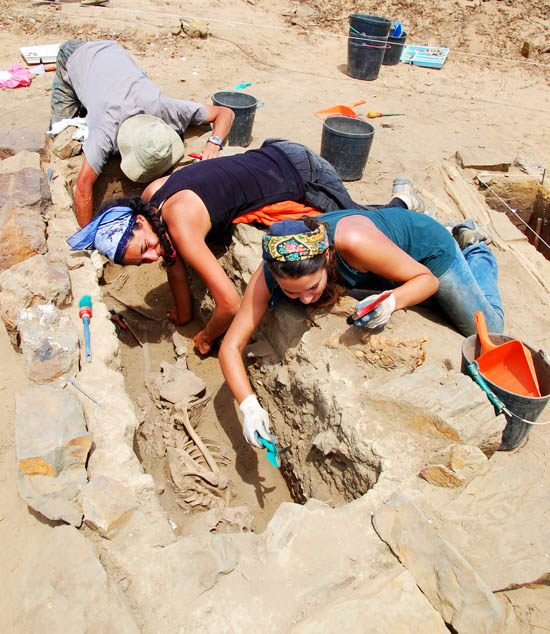 Seven of the graves in the Rîbat da Arrifana cemetery, located in Ponta da Atalaia, on the coast of Aljezur, were excavated by the team of archaeologists coordinated by the couple Rosa and Mário Varela Gomes, in a short campaign in the last fifteen days of July.
Seven of the graves in the Rîbat da Arrifana cemetery, located in Ponta da Atalaia, on the coast of Aljezur, were excavated by the team of archaeologists coordinated by the couple Rosa and Mário Varela Gomes, in a short campaign in the last fifteen days of July.
One of these twelfth-century graves belonged to Ibrāhīm bn Sulaymān bn Hayyān, who was perhaps one of the monks of this Islamic monastery or a pilgrim who died there in 1148 AD Or who knows, as Rosa Varela Gomes underlined, “maybe he perished during a battle and was buried here?”
How do researchers know the name of this man buried in one of the nearly seven dozen tombs already discovered in the necropolis located next to the ancient Ribât? Thanks to an epigraphed stele – that is, a tombstone with an inscription carved into the stone – that was discovered two years ago, still placed in the head of the tomb.
This and other stele discovered in the Islamic cemetery are even considered a find of great importance and even rarity, as he explained to Sul Informação archeologist Rosa Varela Gomes: «the two epigraphed stelae, which we found in the Ribat da Arrifana, are the only ones that are known , in the Iberian Peninsula».
Of the seven graves, another also presents a curious aspect, as it is a woman's skeleton. "We don't know if it was a woman who lived here," said the archaeologist, which would even be somewhat unusual, since this was a gathering place for Islamic warrior-monks.
Despite the heat, the wind and the strong sun beating down, the team dedicated itself to digging, with a thousand care, the skeletons buried in that small peninsula above the sea, nine centuries ago. At times, young archaeologists had to lie down on the earth, with their heads hanging down into the grave, inches from secular bones.
“There aren't many necropolises so well preserved with this chronology,” explained Rosa Varela Gomes.
Ten meters from the south wall identified this year
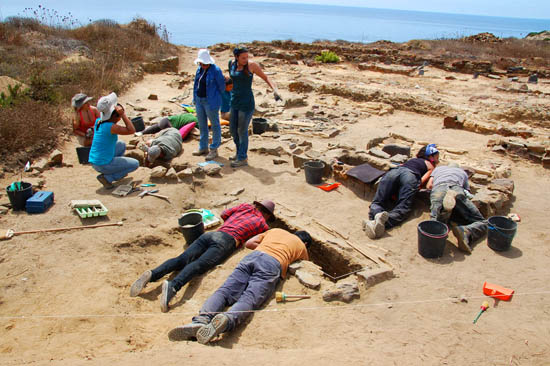 But the survey of the seven skeletons in as many graves was not the only novelty in the short fifteen days of this summer's excavation campaign, in Rîbat da Arrifana.
But the survey of the seven skeletons in as many graves was not the only novelty in the short fifteen days of this summer's excavation campaign, in Rîbat da Arrifana.
«The big news was the identification of a section of wall, with about 10 meters, that would close the Rîbat to the south», explained Rosa Varela Gomes. One more element to try to reconstruct the history of this rîbat, which was, last year, classified as a national monument.
The excavation campaign had a team coordinated by Rosa and Mário Varela Gomes, which also included ten students from the Master's and Degree in Archeology at FCSH at Universidade Nova de Lisboa, as well as anthropologists Nathalie Antunes Ferreira and Filipa Amado dos Santos.
The presence of the two anthropologists is essential to accompany the survey and carry out a subsequent study of the osteological remains, that is, the skeletons taken from the old cemetery. After the fieldwork, «the osteological remains are now being cleaned and studied at the FCSH Archeology Laboratory at the UNL», said Rosa Varela Gomes.
After, in the first years, the archaeological excavation campaigns had the logistical and financial support of the City Council of Aljezur and the Gulbenkian Foundation, this campaign was only possible thanks to the research project financed by the Fondation Max van Berchem, in Geneva.
This time, lamented Mário Varela Gomes, “the Chamber did not provide us with accommodation or transport, as in previous years, which is regrettable. We don't ask for money. We just needed logistical support, namely that they let us accommodate the students at the sports gym in Aljezur».
A Sufi teacher in arms with Christians
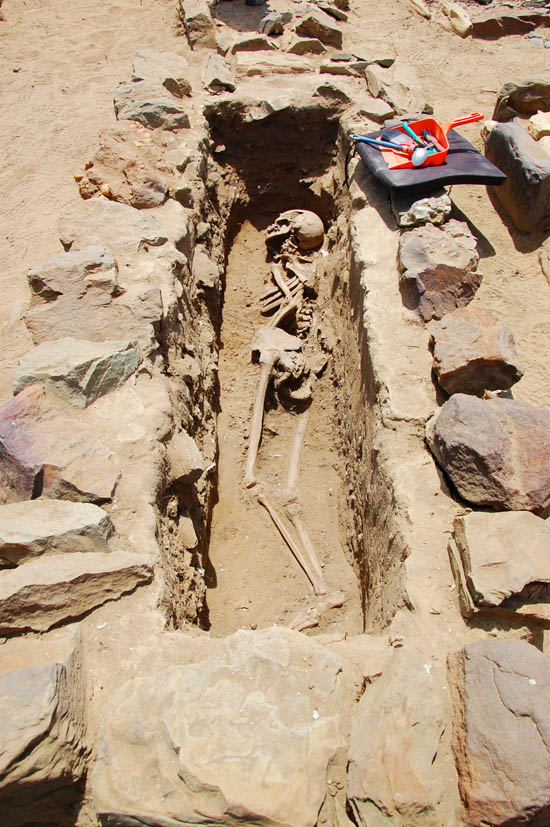 For twelve years, in other words, since 2002, the couple of archaeologists Mário and Rosa Varela Gomes have been coordinating the excavations at Ponta da Atalaia, a small rocky promontory that seems to be advancing into the sea, on the coast of Aljezur.
For twelve years, in other words, since 2002, the couple of archaeologists Mário and Rosa Varela Gomes have been coordinating the excavations at Ponta da Atalaia, a small rocky promontory that seems to be advancing into the sea, on the coast of Aljezur.
At its tip, in the troubled XNUMXth century, there was a rîbat, a kind of monastery-fortress, inhabited by Muslim warrior-monks who took vows of poverty, commanded by the famous Ibn-Qasi, a Sufi master who lived there, with his community, when it already had at its doors the Christian knights of D. Afonso Henriques.
Over a dozen archaeological campaigns, researchers have uncovered several structures of the former monastery-fortress, including the base of the circular minaret, mosques with their mihrabs (oratories facing Mecca), the daara (madrasa) and the necropolis. As these are short archaeological campaigns, there is still a lot of work to be done, such that only about a third of the entire rîbat will already be excavated.
The Ponta da Atalaia rîbat is considered the most important structure of its kind in the entire Iberian Peninsula and its discovery has aroused the interest of researchers across Europe. It is, according to Rosa Varela Gomes, the «most western Islamic archaeological site in Europe».
Classified as a national monument last year – the only one in the entire municipality of Aljezur – the rîbat is located on private land, and the purchase by the State, which was even foreseen in the first version of the Polis Society interventions, has not yet advanced. Southwest Coast.
Over the years of archaeological work, the Rîbat da Arrifana has been visited by numerous citizens of Islamic countries, some of them very illustrious, namely princes, ambassadors and other high dignitaries.
From these contacts, it was always hoped that some support would emerge, given the historical importance that the place has for Muslims. But so far nothing has happened.
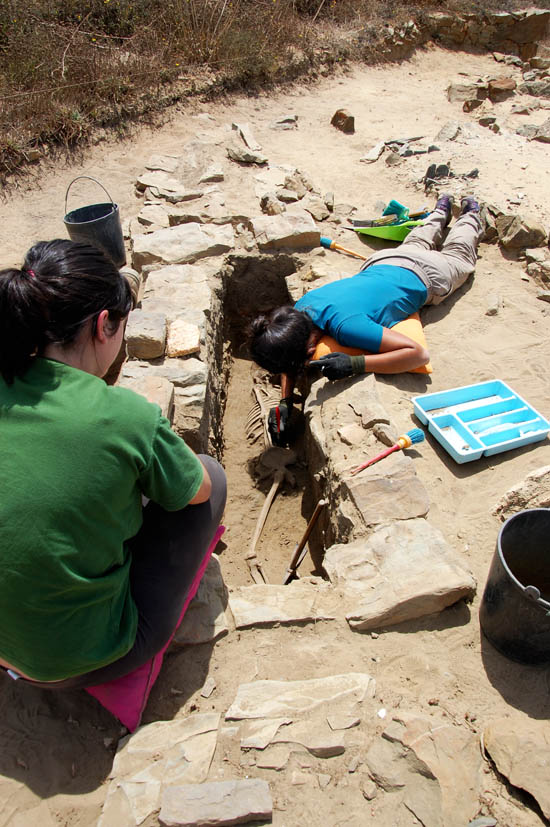
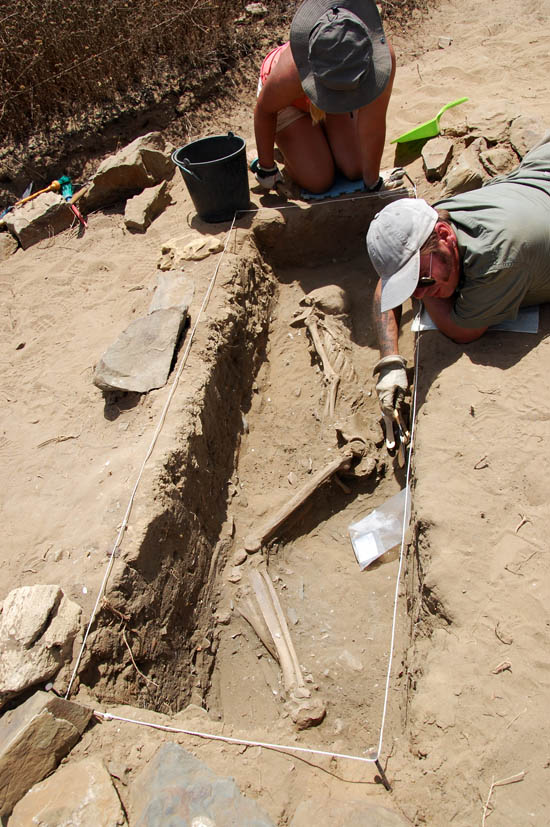
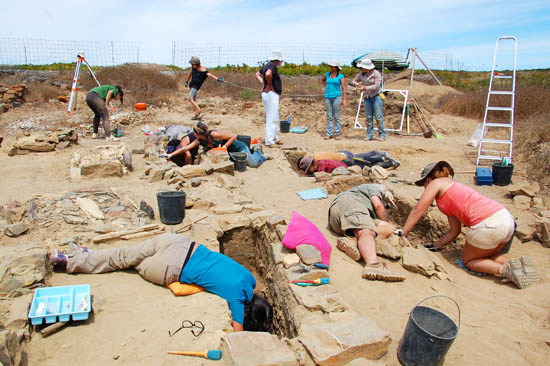
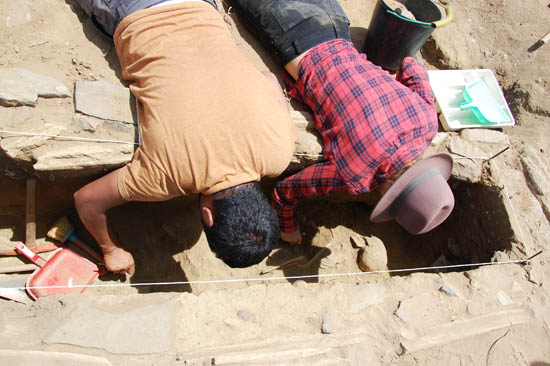
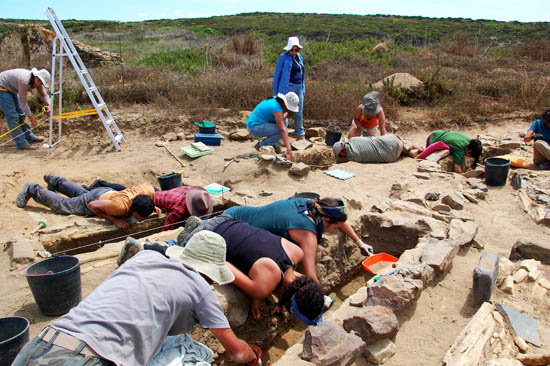
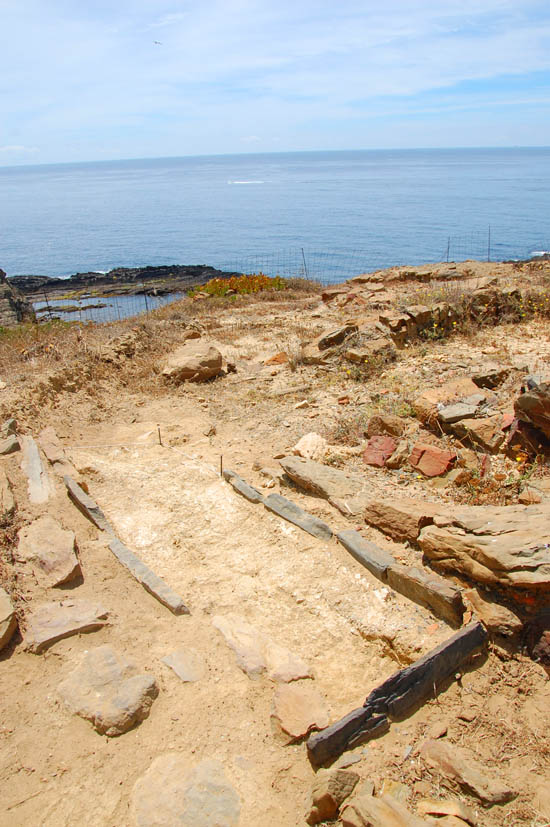


















Comments